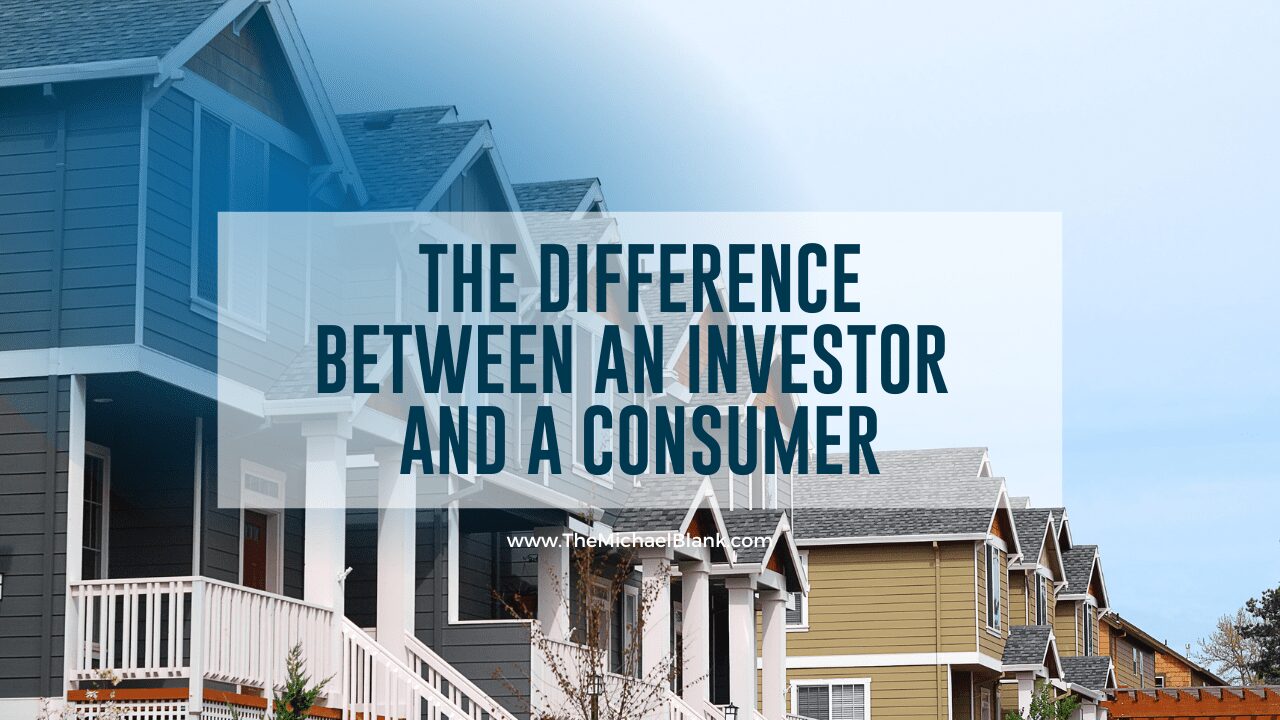Over the years, we’ve encountered so many people who are interested in investing in real estate but are unsure about the difference between being an investor and a consumer. This is an important distinction, especially if you're considering investing in multifamily properties.
The Difference Between An Investor And a Consumer

Make sure you download ALL my resources for FREE at this link: https://themichaelblank.com/vault
Are You an Investor or a Consumer?
First, it's essential to understand that there is a significant difference between being an investor and a consumer in the real estate market. A consumer is someone who buys a property to live in themselves or rent out for personal use. On the other hand, an investor buys a property with the intention of earning a profit.
When it comes to investing in multifamily properties, the difference between being an investor and a consumer is even more critical. As a real estate investor, your primary objective is to maximize your returns on investment, which includes generating cash flow and appreciation on the property.
Risk Level
One of the most significant differences between being an investor and a consumer is the level of risk. A consumer is typically more risk-averse than an investor since they are buying a property for personal use. Investors are more likely to take calculated risks since they are buying a property with the intention of making a profit.
Knowledge Required
Another crucial difference is the amount of knowledge required. A consumer only needs to know the basics of buying and maintaining a property. However, an investor needs to have a deep understanding of the multifamily real estate market, the financing options available, property management, and the economic factors that can impact the value of the property.
As a real estate investor, it's also essential to have a long-term strategy in place. You need to understand that the value of the property may not appreciate immediately, and it may take several years to see a significant return on investment. In contrast, a consumer may buy a property with a short-term goal in mind, such as renting it out for a year before moving in themselves.
Active Investing vs. Passive Investing
If you're an active real estate investor, you need to have a well-thought-out plan in place before investing in multifamily properties. You should have a clear understanding of your investment goals, risk tolerance, and the level of involvement you want to have in the management of the property.
Passive investors, on the other hand, may prefer to invest in multifamily properties through syndication deals. In a syndication deal, a group of investors pool their resources together to invest in a property. This allows investors to benefit from the expertise of the syndicator and reduce the risks associated with investing in multifamily properties.
Being an investor and a consumer in the multifamily real estate market is entirely different.
As an investor, you need to have a deep understanding of the market, a long-term strategy, and be prepared to take calculated risks. A consumer only needs to know the basics of buying and maintaining a property. Regardless of whether you're an active or passive investor, You must do your research and have a clear understanding of your investment goals before investing in multifamily properties.
If you're ready to be an investor, rather than a consumer, you can get started and close on your first deal when you watch this free training.
